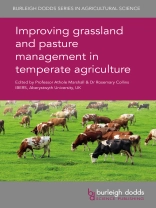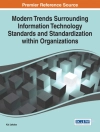- Assesses latest research on how grasslands function
- Surveys best practice in sustainable grassland management
- Considers wider aspects of sustainability such as ecosystem services and biodiversity
Tabella dei contenuti
Part 1 Grassland functions and dynamics
1.The role of grasslands in biogeochemical cycles and biodiversity conservation: O. Huguenin-Elie, Agroscope, Switzerland; L. Delaby and K. Klumpp, INRA, France; S. Lemauviel-Lavenant, INRA and Université de Caen Normandie, France; and J. Ryschawy and R. Sabatier, INRA, France;
2.The role of pasture in the diet of ruminant livestock: Michael R. F. Lee, University of Bristol, UK and Rothamsted Research, UK; M. Jordana Rivero, Rothamsted Research, UK; and John W. Cone, Wageningen University, The Netherlands;
3.Plant–animal interactions in grazing systems: D. F. Chapman, Dairy NZ Lincoln, New Zealand and W. M. Griffiths, Hamilton, New Zealand;
4.Grazing management for sustainable grazing systems: Lilian Elgalise Techio Pereira and Sila Carneiro da Silva, Universidade de São Paulo, Brazil; Cory Matthew and Ignacio F. López, Massey University, New Zealand; and André Fischer Sbrissia, Universidade do Estado de Santa Catarina, Brazil;
Part 2 Management of grasslands
5.Planning and sowing grasslands: David B. Hannaway and Linda J. Brewer, Oregon State University, USA; Steve Fransen, Washington State University, USA; and Glenn Shewmaker, Shannon Williams and Sarah Baker, University of Idaho, USA;
6.Managing grassland for forage production: an overview: Deirdre Hennessy, Teagasc, Ireland;
7.Managing grassland systems to optimise livestock farming: J. L. Peyraud, L. Delaby and R. Delagarde, INRA-Agrocampus Ouest, France;
8.Persistence and yield stability of temperate grassland legumes for sustainable animal production: F. Ortega, L. Inostroza and C. Moscoso, Instituto de Investigaciones Agropecuarias, Chile; and L. Parra and A. Quiroz, Universidad de La Frontera, Chile;
9.Balancing pasture productivity with environmental and animal health requirements: D. R. Woodfield, Grasslands Research Centre, New Zealand; and H. G. Judson, Kimihia Research Centre, New Zealand;
10.Managing soil health for grassland: D. Barker, The Ohio State University, USA;
11.Management of water resources for grasslands: Jean L. Steiner, Pradeep Wagle and Prasanna Gowda, Grazing Lands Research Laboratory – USDA-ARS, USA;
12.Biological weed control in temperate grasslands; Graeme W. Bourdôt and Michael G. Cripps, Ag Research Limited, New Zealand;
13.Restoring degraded grasslands: Llewellyn L. Manske, North Dakota State University, USA;
14.Advances in remote sensing for monitoring grassland and forage production; Michael Wachendorf, University of Kassel, Germany;
Part 3 Sustainability and wider uses of grasslands
15.Research challenges in adapting grasslands to climate change: Richard Kipling, Aberystwyth University, UK;
16.Protecting biodiversity in grasslands: J. Isselstein, University of Göttingen, Germany;
17.Advances in feeding grass silage: Pekka Huhtanen, Swedish University of Agricultural Sciences, Sweden;
18.Use of grassland for bioenergy and biorefining: Ulrich Thumm, University of Hohenheim, Germany;
19.Organic grassland: Thomas F. Doring and Ulrich Köpke, University of Bonn, Germany
Circa l’autore
Professor Ulrich Köpke is Director and Head of the Institute of Organic Agriculture at the University of Bonn, Germany. He was Founding President of the International Society of Organic Agriculture Research (ISOFAR) which plays a leading role in promoting collaboration in international organic research. Professor Köpke has written over 200 publications on nutrient management, life cycle analysis and other techniques for optimising agronomic practices in organic agriculture, as well as coordinating a number of major European research projects in organic agriculture.












